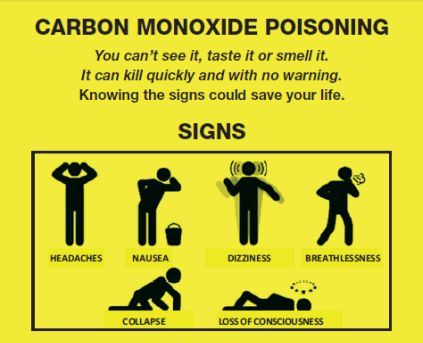

Most appliances should be installed by qualified professionals. Make sure appliances are installed and operated according to the manufacturer's instructions and local building codes.For rapidly developing, high level CO exposures (e.g., associated with use of generators in residential spaces), victims can rapidly become mentally confused, and can lose muscle control without having first experienced milder symptoms they will likely die if not rescued. For slowly developing residential CO problems, occupants and/or physicians can mistake mild to moderate CO poisoning symptoms for the flu, which sometimes results in tragic deaths. Symptom severity is related to both the CO level and the duration of exposure. High level CO poisoning results in progressively more severe symptoms, including: The initial symptoms of low to moderate CO poisoning are similar to the flu (but without the fever). What are the symptoms of CO poisoning?īecause CO is odorless, colorless, and otherwise undetectable to the human senses, people may not know that they are being exposed. The Centers for Disease Control and Prevention estimates that several thousand people go to hospital emergency rooms every year to be treated for CO poisoning. Still others die from CO produced by non-consumer products, such as cars left running in attached garages. Forty-seven of these deaths were known to have occurred during power outages due to severe weather, including Hurricane Katrina. In 2005 alone, CPSC staff is aware of at least 94 generator-related CO poisoning deaths.
#Initial signs of carbon monoxide poisoning portable
These products include malfunctioning fuel-burning appliances such as furnaces, ranges, water heaters and room heaters engine-powered equipment such as portable generators fireplaces and charcoal that is burned in homes and other enclosed areas. On average, about 170 people in the United States die every year from CO produced by non-automotive consumer products. How many people are unintentionally poisoned by CO? Products and equipment powered by internal combustion engines such as portable generators, cars, lawn mowers, and power washers also produce CO. It is produced by the incomplete burning of various fuels, including coal, wood, charcoal, oil, kerosene, propane, and natural gas. What is carbon monoxide (CO) and how is it produced?Ĭarbon monoxide (CO) is a deadly, colorless, odorless, poisonous gas.


 0 kommentar(er)
0 kommentar(er)
